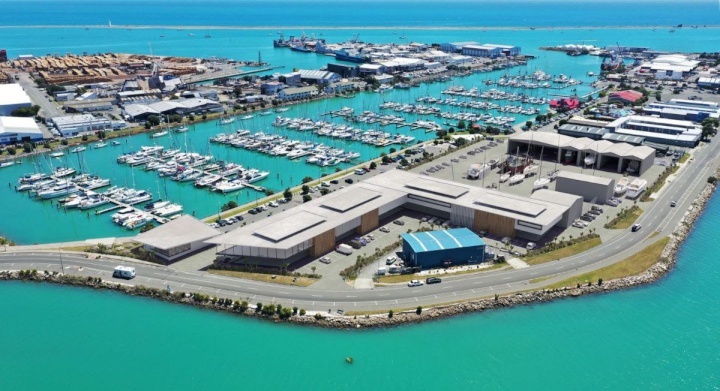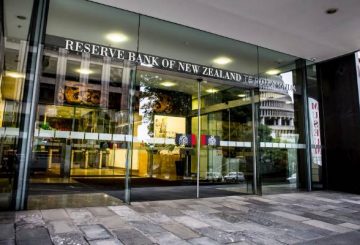Một dự thảo tổng thể quy hoạch đề ra kế hoạch của Hội đồng thành phố Nelson để biến Nelson Marina thành một trung tâm chèo thuyền hiện đại và là nơi để mọi người trong cộng đồng chúng ta thưởng thức, đi ra ngoài để tham khảo ý kiến công chúng vào ngày 20 tháng 6.
Trungtâm Marina được đề xuất dành riêng cho doanh nghiệp bán hàng biển và dịch vụ liên quan
Dự thảo Quy hoạch tổng thể Marina, được đề nghị đưa ra để nộp công chúng tại Tiểu ban Phát triển Chiến lược và Bất động sản vào ngày 9 tháng 6, là một tầm nhìn 15 năm, kết hợp hiện đại hóa các cơ sở vật chất cho chủ thuyền với các liên kết được cải thiện với trung tâm thành phố để khuyến khích công chúng truy cập.
Chủ tịch Tiểu ban Phát triển Chiến lược và Bất động sản Gaile Noonan cho biết kế hoạch này nhằm tạo ra một trung tâm chèo thuyền phát triển mạnh sẽ kích thích sự tăng trưởng và hoạt động trong nền kinh tế địa phương của Nelson.
“Có rất nhiều tiềm năng tại Marina của chúng tôi, và quy hoạch tổng thể này nhằm mục đích phát hành nó. Những lợi ích cho Nelson là một thành phố rất đơn giản, một kết nối mạnh mẽ hơn giữa trung tâm thành phố của chúng tôi và biển, một không gian mới mở cửa cho tất cả mọi người trong cộng đồng của chúng tôi, và ở trung tâm của nó là một cơ sở hiện đại cho những người chèo thuyền cung cấp tất cả mọi thứ họ mong đợi để nhìn thấy tại một bến du thuyền hiện đại.”
Được sản xuất sau khi tham khảo ý kiến của các bên liên quan chính, quy hoạch tổng thể bao gồm một loạt các sáng kiến mới cho Marina trong khoảng thời gian 10-15 năm, bao gồm:
- Mộtlối đi dạo bờ sông mới cho đi bộ và đi xe đạp
- Mộtcông viên bỏ túi được hồi sinh
- Cơsở mới cho một quán cà phê và các cửa hàng thực phẩm và đồ uống khác với tầm nhìn ra Marina
- Mộtcơ sở thể thao biển mới tiềm năng cho các câu lạc bộ sử dụng tàu không động lực.
Những cải tiến đáng kể cho cơ sở hạ tầng chèo thuyền tại Marina sẽ bao gồm:
- Mộtbến tàu nhiên liệu chuyên dụng
- Cấuhình lại khu vực đoạn đường nối thuyền công cộng để giảm tắc nghẽn
- HardstandMarina được chứng minh tương lai và cạnh tranh trên toàn quốc và nâng thuyền mới
- Cấuhình lại các bến bến du thuyền để đáp ứng nhu cầu vượt trội về kích thước bến lớn hơn và đảm bảo không gian nước hiện có được sử dụng tối ưu
- Kếhoạch cho một bến du thuyền trong tương lai đáp ứng nhu cầu trong bốn mươi năm tới
- Kếhoạch dài hạn cho một ngăn xếp khô để cung cấp lưu trữ trên đất liền hiệu quả.
Hội đồng Noonan cho biết: “Chúng tôi thực sự đang xem xét mở cửa Marina cho công chúng, đồng thời đảm bảo chúng tôi cung cấp cho những người chèo thuyền với các dịch vụ tốt nhất có thể.
“Đó là một hành động cân bằng tốt, nhưng hai mục tiêu không loại trừ lẫn nhau. Một không gian hấp dẫn, đầy người sẽ tốt cho sự thành công lâu dài của Marina và được hỗ trợ bởi các bên liên quan Marina trong quá trình tham gia trước của chúng tôi.
“Bây giờ chúng tôi muốn lắng nghe từ những người sử dụng bến du thuyền trên cơ sở hàng ngày, cũng như toàn bộ cộng đồng. Kế hoạch có đưa bến du thuyền đi đúng hướng không? Có bất cứ điều gì bạn muốn xem thêm không?”
Đang chờ quyết định cuối cùng tại cuộc họp đầy đủ của Hội đồng vào ngày 14 tháng 6, tham vấn sẽ mở ra vào ngày 20 tháng 6 và kéo dài trong bốn tuần.





























































